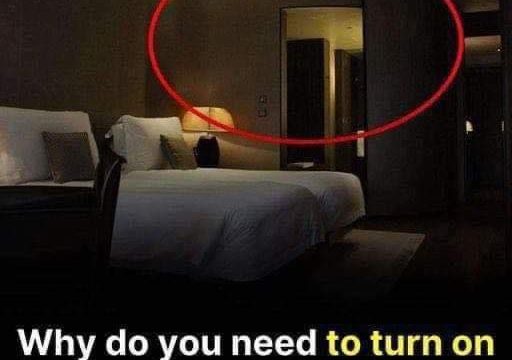Manicures can enhance the appearance of your nails, making them look smooth and polished. However, even the shiniest nail polish can’t mask potential health problems that might be reflected in your nails. Your nails can serve as a window into your overall health, often revealing clues about underlying issues with your liver, lungs, or heart. Paying close attention to changes in your nails can help you recognize potential health concerns or simply identify signs of aging.

While some nail changes, like stripes or ridges, may not be serious, experts, including the National Library of Medicine (NCBI), caution that certain patterns can indicate more significant health problems. This article explores the different types of nail stripes, their potential meanings, and when to seek medical advice.
Understanding Nail Stripes
Vertical Stripes
Vertical stripes, also referred to as longitudinal striations, are lines that run from the base of the nail to the tip. These stripes are quite common, especially as people age, because nails tend to develop more noticeable ridges over time.
In some cases, vertical stripes might suggest a nutritional deficiency, such as a lack of essential vitamins or minerals like vitamin B12, magnesium, or iron. Though vertical ridges are usually harmless and considered a normal part of aging, a sudden appearance or increase in these ridges could indicate health conditions such as anemia or thyroid issues. If you notice any sudden or significant changes in your nails, it may be wise to consult a healthcare provider.
Horizontal Stripes
Horizontal stripes, also known as Beau’s lines, are grooves that run across the width of the nail. These lines can signal more serious health concerns. Beau’s lines often appear following an injury to the nail, but they can also result from systemic health issues like malnutrition, uncontrolled diabetes, heart attacks, or respiratory diseases.
These ridges typically develop when nail growth temporarily halts due to stress or illness. During challenging periods, your body may prioritize critical functions over nail growth, causing these grooves to form. According to the NCBI, the sudden onset of horizontal grooves could indicate the rapid emergence of a disease. When Beau’s lines appear on all 20 nails, it often points to severe conditions such as mumps, pneumonia, coronary thrombosis, Kawasaki disease, syphilis, or hypoparathyroidism. If you observe horizontal stripes on your nails, especially if they are present on multiple nails, seeking medical attention is crucial.
White Stripes
Horizontal white lines, called Muehrcke’s lines, can suggest issues with liver or kidney function. These lines are unique because they do not create a groove or indentation in the nail surface and often disappear temporarily when pressure is applied to the nail. Muehrcke’s lines usually appear on several nails simultaneously and are linked to a drop in blood protein levels, particularly albumin.
Individuals with chronic liver issues or malnutrition are more likely to exhibit these white lines. If you notice Muehrcke’s lines on multiple nails, consulting a healthcare provider is essential. This condition may indicate protein deficiencies or underlying problems with your kidneys or liver that require medical evaluation.
The Role of Diet in Nail Health
Many people experience nail ripples or ridges, which are often harmless and can improve with proper care. A well-balanced diet rich in protein, vitamins, and minerals can significantly enhance nail health. Nutrients like biotin, vitamin E, iron, and zinc are particularly beneficial for strengthening nails and promoting growth.
Dr. Sara Norris, a naturopathic doctor based in Los Angeles, highlights the connection between nail health and nutrition. She explains, “Nail health often reflects how well you’re eating or digesting your food.” She adds that brittle, weak, or peeling nails are among the most common issues she encounters, typically caused by poor dietary habits rather than serious health problems.
Incorporating nutrient-rich foods like leafy greens, nuts, eggs, and lean proteins into your diet can improve the condition of your nails over time. Simple lifestyle changes, such as staying hydrated and avoiding excessive exposure to harsh chemicals, can also make a noticeable difference.
What Your Nails Reveal About Your Health
Your nails can provide valuable insights into your overall health. While some changes, such as minor ridges or discoloration, may be a normal part of aging, others could indicate underlying health concerns. Observing these signs and understanding their potential implications can help you take proactive steps toward maintaining your health.
For instance, vertical stripes may simply reflect the aging process, but they can also signal deficiencies or hormonal imbalances. Horizontal ridges might point to stress or past illnesses but could also indicate serious conditions that require medical attention. Similarly, white lines like Muehrcke’s lines may hint at liver or kidney problems, emphasizing the importance of addressing such changes promptly.
When to See a Doctor
Although many nail changes are harmless and reversible, it’s essential to recognize when they might signal a more significant health issue. If you notice sudden or dramatic changes in your nails, such as the appearance of horizontal ridges on multiple nails, persistent white lines, or changes accompanied by other symptoms, it’s important to consult a healthcare professional. Early detection and treatment of underlying health conditions can make a significant difference in overall outcomes.
Conclusion
Your nails do more than enhance your appearance; they offer important clues about your internal health. From aging signs to potential health issues, paying attention to your nails can help you catch problems early and take the necessary steps to address them. By maintaining a balanced diet, practicing good nail care habits, and staying vigilant about changes, you can support both your nail health and overall well-being. Remember, your nails are like tiny health indicators—don’t ignore what they’re trying to tell you.





